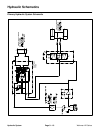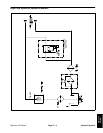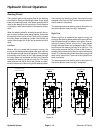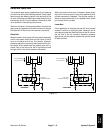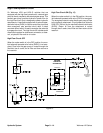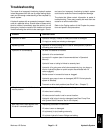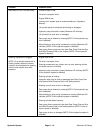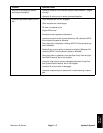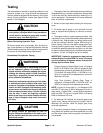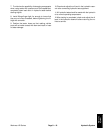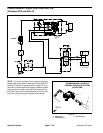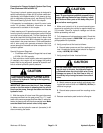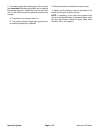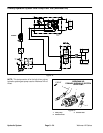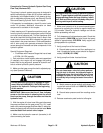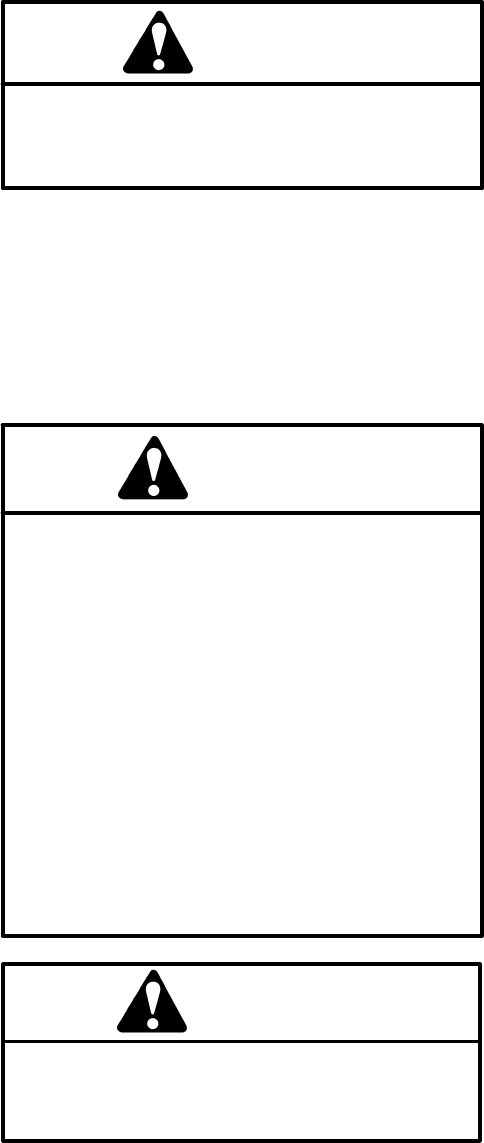
Workman HD SeriesPage 9 − 18Hydraulic System
Testing
The most effective method for isolating problems in the
hydraulic system is by using hydraulic test equipment
such as pressure gauges and flow meters in the circuits
during various operational checks (see Special Tools
section in this Chapter).
CAUTION
Failure to use gauge with recommended pres-
sure (psi/bar) rating as listed in test procedures
could result in damage to gauge and possible
personal injury from leaking hot oil.
Before Performing Hydraulic Tests
All obvious areas such as oil supply, filter, binding link-
age, loose fasteners or improper adjustments must be
checked before assuming that a hydraulic component is
the source of the problem being experienced.
Precautions For Hydraulic Testing
Before disconnecting or performing any work
on the hydraulic system, all pressure in the
system must be relieved by stopping the engine,
rotating the steering wheel in both directions,
lowering or supporting the bed and operating
other hydraulic accessories.
Keep body and hands away from pin hole leaks
or nozzles that eject hydraulic fluid under high
pressure. Use paper or cardboard, not hands, to
search for leaks. Hydraulic fluid escaping under
pressure can have sufficient force to penetrate
skin and cause serious injury. If fluid is injected
into the skin, it must be surgically removed
within a few hours by a doctor familiar with this
type of injury. Gangrene may result from such
an injury.
WARNING
CAUTION
All testing should be performed by two (2)
people. One person should be in the seat to oper-
ate the machine and the other should read and
record test results.
1. Thoroughly clean the vehicle before disconnecting or
disassembling any hydraulic components. Always keep
in mind the need for cleanliness when working on hy-
draulic equipment. Contamination will cause excessive
wear of hydraulic components.
2. Review all test steps before starting the test proce-
dure.
3. Put metal caps or plugs on any hydraulic lines left
open or exposed during testing or removal of compo-
nents.
4. The engine must be in good operating condition. Use
a phototach (non−contact tachometer) when performing
a hydraulic test. Engine speed can affect the accuracy
of the test readings. Monitor engine RPM during hy-
draulic testing. Use the information below when per-
forming hydraulic system tests. If engine RPM is above
or below the specified speed during a test, you will need
to adjust the expected hydraulic performance paramet-
ers (aprox. 3% per 100 engine rpm at full throttle)
IMPORTANT: Hydraulic component output volume
relates directly to engine RPM. For every 100 engine
rpm the following component output volumes will
change by the volume listed.
Primary Hydraulic System Gear Pump: 100 engine
RPM = 0.14 GPM or 18 oz. (532 cc) of hydraulic fluid
displaced per minute for Workman HDX and HDX−
D units and 100 engine RPM = 0.16 GPM or 21 oz.
(619 cc) of hydraulic fluid displaced per minute for
Workman HD units.
High Flow Hydraulic System Gear Pump (if
equipped): 100 engine RPM = 0.22 GPM or 28.7 oz.
(850 cc) of hydraulic fluid displaced per minute
NOTE: Engine−to−Pump ratio is 1:1 for Workman HDX
and HDX−D units and 1:0.63 for Workman HD units. In
other words, 1 engine RPM = 1 pump RPM for Workman
HDX and HDX−D units and 1 engine RPM = 0.63 pump
RPM for Workman HD units.
5. On Workman HD vehicles, the hydraulic gear pump
is belt driven. Before performing any hydraulic test on
Workman HD vehicles, check for proper gear pump
drive belt adjustment.
6. To prevent damage to tester or components when
using tester with pressure and flow capabilities, the inlet
and the outlet hoses must be properly connected and
not reversed.



